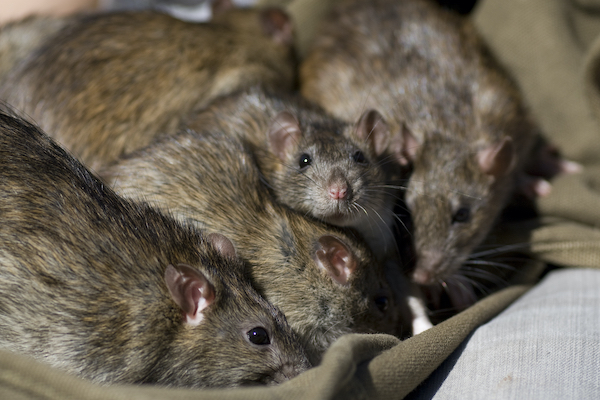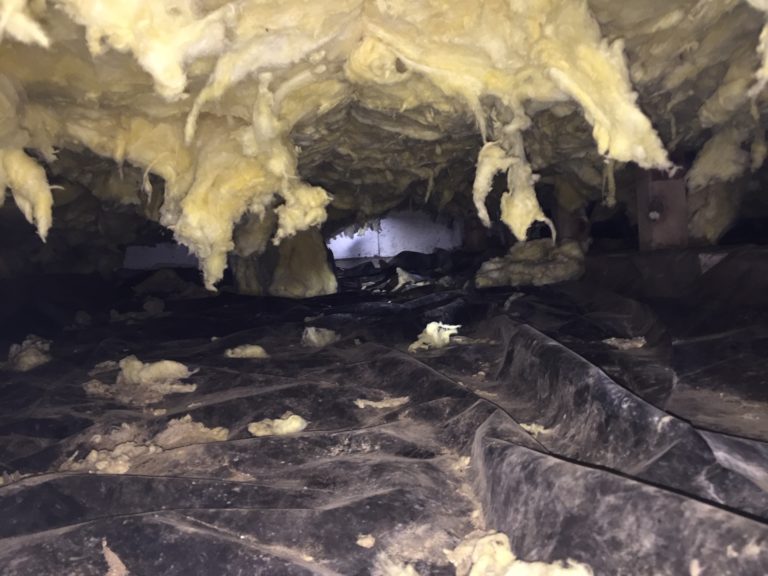Seasonal Blog

Prevention Is The Best Strategy When it Comes To Rats.
From the waters of Puget Sound to the majestic mountains and the lush evergreen forests that lay in between, there are few places that can match it. But what makes our home in the Pacific Northwest appealing, is also a perfect habitat for rats! Further, given our cold damp winters, rats naturally seek out warm, dry environments to nest in, ultimately finding their way into your home’s crawl space or attic.
Here in the Pacific Northwest, the two common rats that thrive in our area are Norway and Roof rats. Due to the clever nature of the rat, they can be difficult to remove on your own. Further, both species are prolific producers. On average each year, the female Norway rat has 6 to 8 litters. Female rats are pregnant for 21 to 26 days, and each litter contains 7 rats on average but can have between 2 and 22 young. Female Roof rats can produce up to 40 offsprings per year. Left unchecked, a few rats that make their way into your home can quickly become a large infestation.
Unfortunately, many home owners are unaware they have an infestation until they hear sounds coming from their attics or crawl spaces, smell foul odors or see droppings, or even see the rodents themselves, before they realize they have a problem. Further, in many instances of infestation there is structural damage that comes with it. This includes compromised insulation and vapor barriers with urine and feces, chewed electrical wiring and plumbing; all of which is not only expensive to repair but also poses potential health and safety hazzards.

Despite the large populations of resident rodents in our area, it is possible to keep them from seeking out your home. Prevention is the best strategy when it comes to rats, and there are steps that can be taken to reduce or eliminate the risk. A through inspection of your home’s attic and crawl space should be completed by a professional. A technician will look for and identify entry points where rodents can gain access. This includes not only visible holes and breeches in ventilation screening, but also inspecting crawl space access doors, utility access points, garage doors, and signs of rodents burrowing under shallow foundations.
Once identified, these access points require proper exclusion. Methods include fortifying or replacing insufficient, damaged or missing ventilation screening, repair or replacing crawl space access doors, addressing garage door gaps and plugging up access holes with professional grade exclusion materials.
“The Pacific Northwest is a beautiful place to live with the natural beauty of our surroundings. However, this environment is also ideal for rats who find their way into our homes, especially during the rainy winter months.”
On the outside of the home the strategy should be to reduce rodent attractants and potential nesting areas on your property. This includes keeping garbage containers lids secure, removing any debris or brush piles and, if you have fruit trees, removing fallen fruit off the ground – especially rotting apples which is a major rodent attractant. In addition, keep clutter away from your home and don’t allow your landscape to become overgrown by trimming away areas where rodents can move without fear of detection. And keep firewood piles neatly stacked and as clean as possible.
In the event you discover you have a rodent infestation, it is important to call a professional for at least an inspection to assess the extent of the infestation and identify how they got it. Further, when exterminating the infestations, there are several professional and consumer methods available but as an advocate of our environment and abundant wildlife, I feel it is critical to avoid the use of rodenticides as this poses risks to native animals and pets if they come in contact and consume a rodent that consumed these poisons. Rather, the safer method is the use of commercial grade snap traps with non toxic baits that are strategically placed in areas where children, pets and wildlife cannot come in contact with them. Using this method, there is more labor involved by continually monitoring the traps, but the results are just as effective and without the risks of rodenticides.

But trapping does require expertise, especially when it comes to rats. Unlike mice, rats will not approach a baited trap without caution. Rats are clever, and if they happen to snap a trap without getting caught, they likely will become trap-phobic. With that, it is critical to know when and how to set a trap, as rats not only map out their nesting areas such as a crawl spaces, but they also know when the area has been disturbed or something new, such as a trap, has been introduced. An experienced professional will know how to avoid this, and in the event they are trap-phobic before a pest control technician arrives, they will know how to re-condition the rat’s behavior so that it will lose its fear and ultimately let down its guard.
The Pacific Northwest is a beautiful place to live with the natural beauty of our surroundings. However, this environment is also ideal for rats who find their way into our homes, especially during the rainy winter months. Trust Olympus Pest Control & Prevention not only eliminates these rodents, but also addresses and eliminates the ways they get in. Don’t wait until rodents invade your home. Give us a call today for a free evaluation to proactively prevent the infestation in the first place.

